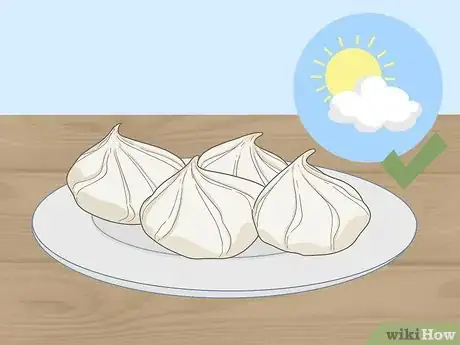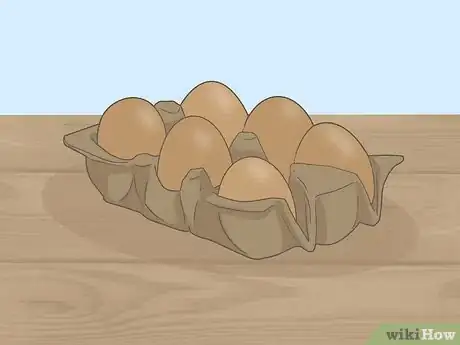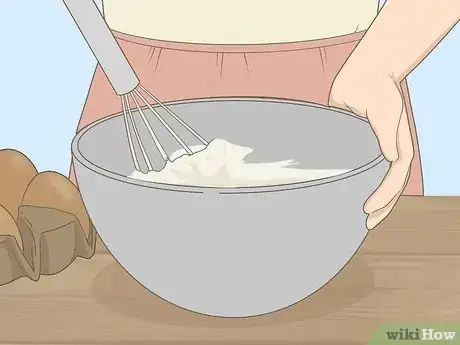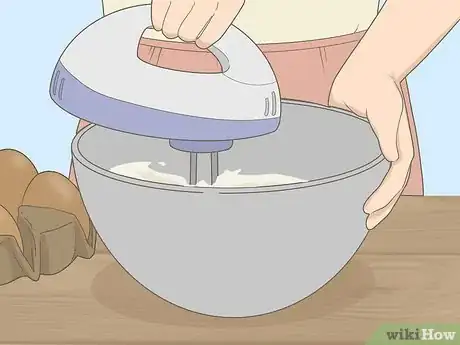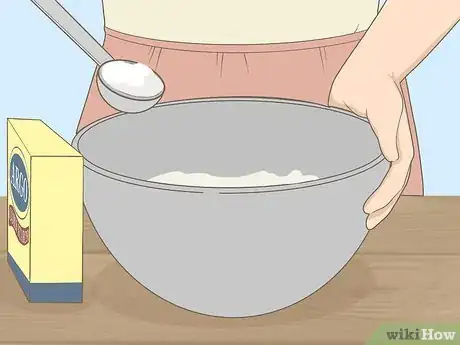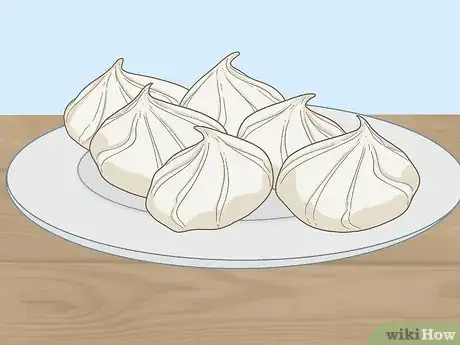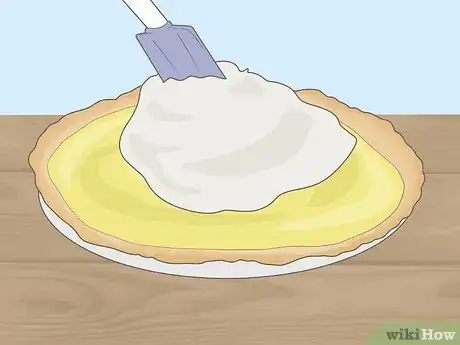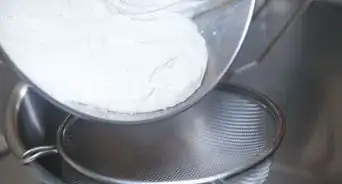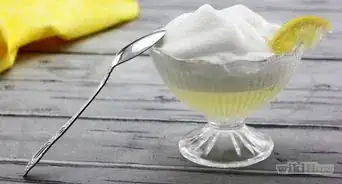This article was co-authored by wikiHow Staff. Our trained team of editors and researchers validate articles for accuracy and comprehensiveness. wikiHow's Content Management Team carefully monitors the work from our editorial staff to ensure that each article is backed by trusted research and meets our high quality standards.
There are 7 references cited in this article, which can be found at the bottom of the page.
This article has been viewed 13,685 times.
Learn more...
Weeping is when your meringue leaks small beads of moisture, affecting its look and taste. This usually happens if your meringue is made when it's super humid or if the egg whites and sugar aren't mixed correctly. To keep your fresh meringue from doing this, all you have to do is pay special attention to the recipe instructions to be sure you're following them exactly.
Steps
Creating the Meringue
-
1Make your meringue on days with low-humidity. If it’s super humid indoors or outside, the extra moisture in the air will affect your meringue and make it sweat more. Plan to make your meringue on a sunny, dry day to avoid any weeping.[1]
- If you have to make your meringue on a day when it's humid outside, place it in a room with the least humidity once you're done.
-
2Use fresh, room temperature egg whites to make your meringue. Fresh eggs will have the best taste in your meringue, but it’s okay to use store-bought ones too. Once you crack the eggs and separate the egg whites, let the egg whites sit out for a few minutes so they become room temperature. This will create the best consistency in the meringue.[2]
- You can also remove the refrigerated eggs from the fridge and let them sit out for 30 minutes before separating the egg whites.
Advertisement -
3Dissolve the sugar completely to create a smooth consistency. Once the egg whites and sugar are whipped together, rub a scoop of the meringue between your fingers and see if you can feel any grains. If you can, this means the sugar isn’t completely dissolved and needs to be whipped more before it's finished.[3]
- Adding the sugar gradually will help it dissolve more thoroughly.
-
4Mix the meringue with a mixer on high to create stiff peaks. Use a mixer to mix the sugar and egg whites together easily, setting the mixer to the highest setting. If you don’t have a mixer, stir the ingredients together by hand using a large mixing spoon, stirring quickly to imitate a high speed.[4]
- You’ll know the meringue is done mixing when you scoop it up and it forms stiff peaks.
-
5Add cornstarch to the meringue to stabilize it. Cornstarch helps the meringue keep its shape, making it a good ingredient addition if you’re worried about your meringue weeping. Add about 1 tablespoon (15 ml) of cornstarch into the meringue as you’re whipping it so it will absorb some of the extra moisture.[5]
- If you're making more than one batch of meringue, add more cornstarch to balance it out.
-
6Avoid overbaking your meringue so the egg whites don’t shrink. When the egg whites in your meringue shrink, they release more moisture and cause the meringue to sweat. Check on your meringue throughout the baking process to be sure you take it out when it’s done instead of leaving it in to cook for too long.[6]
- If you're baking meringue cookies, a good way to figure out if they're done is to see if they can be lifted off of the baking sheet easily and have a bottom that's cooked.
Serving and Storing Meringue
-
1Serve your meringue right after making it so it stays fresh. The longer your meringue sits out, the more likely it is to be affected by humidity and start to weep. Plan your timing so that you finish your meringue right before you need to serve it, ensuring it looks and tastes its best.[7]
-
2Heat the filling before adding the meringue to prevent weeping. If you add your meringue to a cooled filling, it’s more likely to gather liquid. Instead, make your filling right before you make the meringue, or heat the filling up in the oven beforehand. Add the meringue topping to your filling while it’s still warm so the heat will rise up all the way through the meringue.[8]
-
3Keep your meringue out of the fridge until it’s time to store it. Refrigerators tend to have lots of moisture in them, so if you do end up making your meringue before it’s time to serve it, leave it out on the counter if possible. After it’s been sitting out for a couple hours, it’ll need to go in the fridge to preserve it (though this may make it weep).[9]
- Place your meringue on the counter in a spot that doesn’t have any drafts.
References
- ↑ https://www.southernliving.com/kitchen-assistant/how-to-keep-meringue-from-weeping
- ↑ http://www.dianasdesserts.com/index.cfm/fuseaction/bakingtips.piesandtarts/PiesandTarts.cfm
- ↑ http://www.dianasdesserts.com/index.cfm/fuseaction/bakingtips.piesandtarts/PiesandTarts.cfm
- ↑ https://www.youtube.com/watch?v=9KoV6EfN0es#t=2m27s
- ↑ https://bakingbites.com/2013/04/why-do-meringues-weep/
- ↑ https://www.bhg.com/recipes/how-to/bake/how-to-prevent-meringue-pie-topping-from-weeping/
- ↑ https://www.today.com/food/how-keep-meringue-pies-getting-soggy-I58092
- ↑ https://www.youtube.com/watch?v=5ndEZ0m3Vz8#t=11s
- ↑ https://www.today.com/food/how-keep-meringue-pies-getting-soggy-I58092
